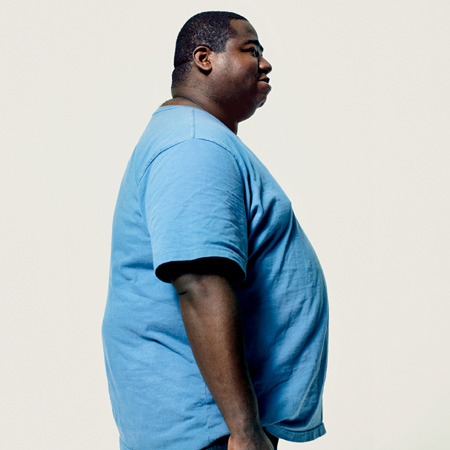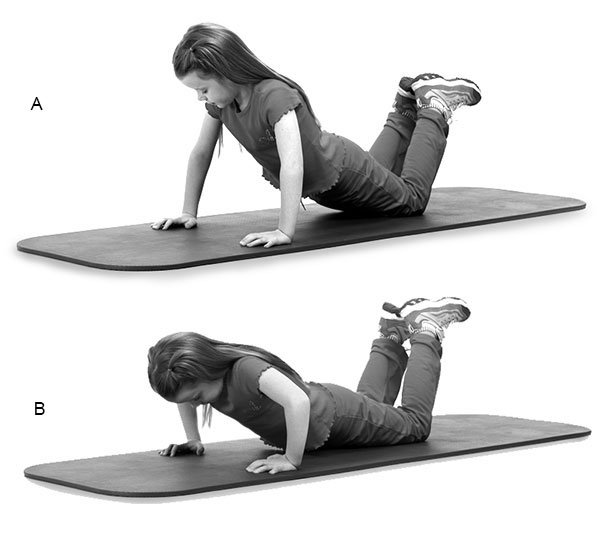Use Brain Power to Burn Fat
Imagine if you had the power to control what your body does with the calories you eat.
So instead of storing your calories as belly flab, you'd turn them into sleeve-busting muscle. And you'd burn stored fat for energy.
It's a panacea for the modern male body: Your biceps grow as your love handles shrink.
This can be your reality with the TNT Diet and Exercise Plan.
TNT, or Targeted Nutrition Tactics, means specific nutrition (and exercise) strategies that enable you to reach your body composition goals as fast as possible.
It can be customized for anyone's goals. You can use TNT to build muscle and lose fat simultaneously -- a feat that most nutrition and fitness experts will tell you is impossible.
They're wrong. By using scientific principles of metabolism and physiology, this plan will do just that.
TNT not only works for the guy who wants to lose 50 pounds of fat, but also for the guy who wants to trade 10 pounds of fat for 10 pounds of muscle.

Simply put, TNT is all about eating the right foods at the right times. Understand the principles and you’ll have the power to dramatically remodel your body.
This is a 12-week program that'll provide all of the benefits that TNT has to offer. Based on results from our lab, stick with the plan for 12 weeks, and you can expect to lose 15 to 30 pounds of fat, build several pounds of new muscle, and significantly reduce your risk for heart disease and diabetes.
Think of it as an 84-day investment in yourself: The payoff is huge. The drawback: you'll probably need to buy new clothes. And, hey, you could probably use a style upgrade anyway.
If you don't mind dieting on blind faith, you can start the TNT Diet now by clicking here. But read on to learn more about the science of TNT.
To understand how TNT works, we need to introduce you to glycogen.
Glycogen is the name for carbohydrates that are stored in your muscles. Picture glycogen as a storage tank for sugar, the form of carbohydrate your body uses for fuel.
So just as you have fat stores, you also have sugar stores. But your fat stores can expand (you can get fatter and fatter). Your glycogen tank, however, has a limited capacity to store sugar.
Think of your car's 14-gallon gas tank. Try to fill it with 20 gallons and the extra six would spill onto the pavement.
It's the same way with sugar and your glycogen tank. A full glycogen tank signals your body to use any extra incoming carbohydrates for energy -- instead of using your stored fat. Otherwise, your glycogen tank would overflow.
So your body not only stops burning fat, it starts conserving it -- just in case of starvation. Because most people's diets are excessively high in carbohydrates, their glycogen levels are always at peak capacity. Their bodies won't allow them to use their stored fat for energy. That's how America got fat.
What's more, perpetually high glycogen levels are a serious health threat. When excess carbohydrates from your diet can't be stored as sugar in your glycogen tank, the overflow causes sugar to build up in your blood stream.
The result: Chronically high blood sugar, which leads to heart disease and diabetes. Your body tries to protect you by shuttling the overflow of sugar to your liver, where it's converted to fat (to lower your blood sugar). Ever been told carbs can't make you fat? Think again.
So the secret to losing your gut and reducing your risk for disease is choosing the right diet and exercise program to reduce glycogen. This triggers your body to start using fat as its primary source of energy. As your body burns fat, your belly flab disappears.
Even better, it helps to spark something called "nutrient partitioning," an effect that allows you to simultaneously burn fat and build muscle. Here's how.
Nutrient Partitioning: Your KeyStarting now, instead of concentrating on the number of calories you consume, we want you to focus on where those calories go. This is a concept known as "nutrient partitioning."
It's the process in which calories are diverted away from your fat cells and toward your muscle cells.
You've already learned if your glycogen tank is full, you'll burn very little fat; if it's depleted, your fat-burning furnace will be turned on high. But how exactly does this work? The key is a hormone called insulin.
Insulin levels rise when your blood sugar rises. That's because insulin's primary duty is to move glucose -- the form of sugar your body uses for energy -- from your bloodstream into your muscle cells.
Once in your muscles, glucose can be burned as fuel, or stored as glycogen for later use.
Here's where food enters the picture. Unlike protein and fat -- which have little impact on blood sugar -- carbohydrates are quickly broken down into glucose during digestion and absorbed into your bloodstream.
The more carbs you eat, the higher and faster your blood sugar rises. And your insulin levels rise, too.
When your glycogen stores are full, insulin puts both your fat and muscle cells in growth mode. While that's great for your biceps, it’s a horrible scenario for your belly. After all, the idea is to deflate your gut, not make it bigger.
If there's no room in your muscles to store glucose, then your body wants to use that glucose for fuel. And that means it doesn't want to provide your muscles with energy from any other source, including the fat from your midsection.
The bottom line: When glycogen is at peak capacity, insulin is a double-edged sword: It helps you build muscle -- as long as you also provide the right nutrients and type of exercise -- but also leads to more fat. Which is why you have to flip your cellular switch.
Flipping Your Cellular SwitchNow for the good news: Low glycogen levels change your body's response to insulin. When glycogen is low, insulin still signals your body to build muscle (given the right conditions) but it no longer blocks your ability to burn fat.
Why? Because your body is smart. It makes refilling your glycogen levels a priority, just in case of an energy-emergency. So it sucks any carbs you eat into your muscles to be stored as glycogen.
As a result, your body has to turn to fat as its primary fuel source. After all, if your body were to keep burning carbs, it would only be limiting its ability to replenish glycogen.
If your glycogen levels are low, it's like you have an internal traffic cop diverting glucose away from your gut and into your muscles.
So your muscle cells are in growth mode, but your fat cells are in breakdown mode.
You've created the ideal internal environment for remodeling your body.
Think of it as flipping the cellular switch that allows you to burn fat as you build muscle. The next step, then, is to learn how to implement the nutrition and exercise tactics -- how to ignite the TNT -- that give you complete control over that switch.
Timing Isn't Everything, But It’s Close
These days, nutritionists refer to "good" carbs and "bad" carbs. We agree that some sources of carbohydrates are better than others.
But we believe that the total amount of carbs, and when you eat those carbs, are more important factors.
TNT revolves around the fact that there are "well-timed" carbs and "poorly-timed" carbs.
Think about it: Eat carbohydrates at the wrong time -- like when your glycogen tank is full -- and your body stops burning fat and starts storing it. But eat carbs at the right time -- when glycogen levels are low -- and those carbs help you build muscle, without increasing the size of your gut.
That's why we've based the nutrition tactics in TNT around what we call "Time Zones".
You'll learn what you should eat, and when you should eat it, in order to customize your diet. Relax -- this isn't complicated.
Go to the next page to learn about Time Zones....
The TNT Diet is based on three Time Zones:
The Fat-Burning Time ZoneThe Nutrition Tactic: A low-carb diet
The Benefits:
• Speeds fat loss
• Regulates your appetite
When You'll Use This Tactic: Most of the week. Consider a low-carb diet to be the foundation of the TNT Diet.
What You'll Eat: All of the vegetables, meat, cheese, and eggs that you want.
Why it works: Limiting the number of carbohydrates you eat helps you keep your glycogen tank and insulin levels low. The result: Your body is always in fat-burning mode. This tactic also regulates your appetite, allowing you to eat as much as you desire, without overeating.
The Reloading Time Zone
The Nutrition Tactic: A high-carb diet
The Benefits:
• Boosts muscle growth
• Allows you to eat pizza!
When You'll Use This Tactic: Up to 2 days (36 hours, actually) a week, depending on your goals.
What You'll Eat: Plenty of protein, and lots of carbs, including starchy foods such as bread, pasta, and rice.
Why It Works: The carbohydrates you eat will induce a surge of insulin. This surge drives the muscle-building nutrients you gain from protein-rich foods right into your muscle cells. The downside is that you won't burn fat quite as fast as in the Fat-Burning Time Zone. And the trick is to avoid overeating carbs, which results in an overflowing glycogen tank. That's why we've placed a limit on the total amount of time that you can spend in the Reloading Zone.
The Muscle-Building Time Zone
The Nutrition Tactic: Workout Nutrition
The Benefits:
• Dramatically accelerates muscle growth
• Speeds workout recovery
When You'll Use This Tactic: From 60 minutes before you lift weights to 30 minutes after your training session.
What You'll Eat: Depending on your goals (i.e. faster fat loss or more muscle), you'll either eat a snack of protein -- such as a protein shake or some tuna -- or a snack that contains both protein and carbohydrates, like a turkey sandwich.
Why It Works: Resistance training primes your muscles to grow -- all you have to do is feed them. So you'll always include protein during this time, since this nutrient provides the raw materials for muscle growth, without inhibiting your ability to burn fat. And if you're okay with temporarily slowing fat loss, you can also down a hefty dose of carbohydrates, which will boost muscle-growth even more.
Now that you understand the Time Zones, find out how the TNT Plans work.
-
Diet Strategies: Weight Loss Advice
It doesnt matter how healthy you are or how many pounds youre carrying
-
Could a 2-Day Diet Work for You?
Could dieting for only two days a week be more effective than watching
-
Weight Loss: Abs Diet Snacks
Most diet plans portray snacking as a failure. I want you to think of
-
Belly Off: Rock-Climbing Weight Loss Success Story
Name: Todd Hoyt Age: 37
-
Diet Str egies: Calories
Zero in on caloriesBefore you go cutting calories, calculate your calo
-
Weight Loss: Abs Diet Breakfast Foods
On some Sunday mornings, you crave the all-out, big-momma diner breakf
- DON'T MISS
- Abs Diet Smoothie: Blue Velvet
- The 10 Commandments of Fat Loss
- Are Restaurants Lying to You?
- Abs Diet: Healthy Chicken Dinner
- Weight Loss: Abs Diet Travel Workout
- Keep the Beer, Lose the Belly
- Mood Helps Your Diet
- Weight Loss Success
- Belly Off! Club: Darren Williams
- Eat Better on a Budget




